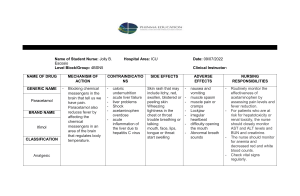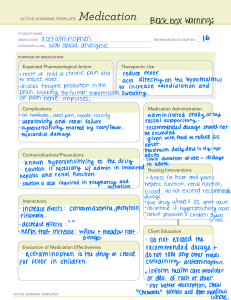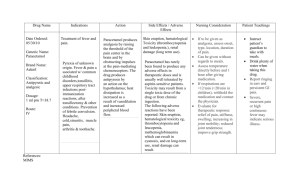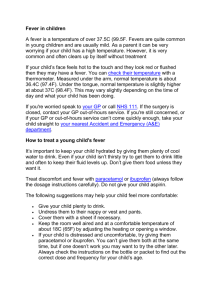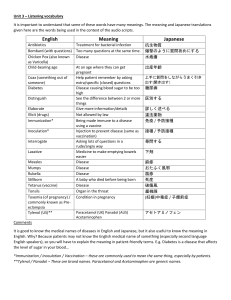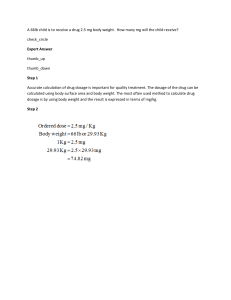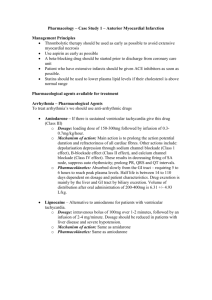Paracetamol (Tylenol) Drug Information: Dosage, Side Effects
advertisement
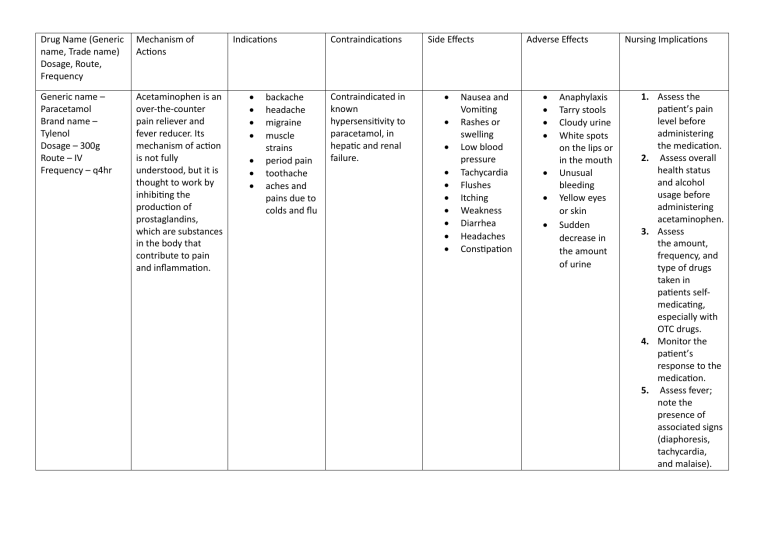
Drug Name (Generic name, Trade name) Dosage, Route, Frequency Mechanism of Actions Generic name – Paracetamol Brand name – Tylenol Dosage – 300g Route – IV Frequency – q4hr Acetaminophen is an over-the-counter pain reliever and fever reducer. Its mechanism of action is not fully understood, but it is thought to work by inhibiting the production of prostaglandins, which are substances in the body that contribute to pain and inflammation. Indications backache headache migraine muscle strains period pain toothache aches and pains due to colds and flu Contraindications Contraindicated in known hypersensitivity to paracetamol, in hepatic and renal failure. Side Effects Nausea and Vomiting Rashes or swelling Low blood pressure Tachycardia Flushes Itching Weakness Diarrhea Headaches Constipation Adverse Effects Anaphylaxis Tarry stools Cloudy urine White spots on the lips or in the mouth Unusual bleeding Yellow eyes or skin Sudden decrease in the amount of urine Nursing Implications 1. Assess the patient’s pain level before administering the medication. 2. Assess overall health status and alcohol usage before administering acetaminophen. 3. Assess the amount, frequency, and type of drugs taken in patients selfmedicating, especially with OTC drugs. 4. Monitor the patient’s response to the medication. 5. Assess fever; note the presence of associated signs (diaphoresis, tachycardia, and malaise).
